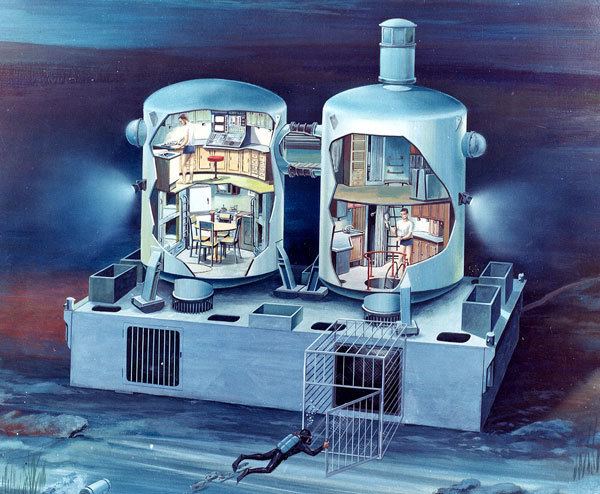 | ||
Tektite habitat u s navy saturation diving film 32344
The Tektite habitat was an underwater laboratory which was the home to divers during Tektite I and II programs. The Tektite program was the first scientists-in-the-sea program sponsored nationally. The habitat capsule was placed in Great Lameshur Bay, Saint John, U.S. Virgin Islands in 1969 and again in 1970.
Contents
- Tektite habitat u s navy saturation diving film 32344
- Habitat
- Tektite I
- Tektite II
- Tektite III
- Ecology
- Physiology
- References
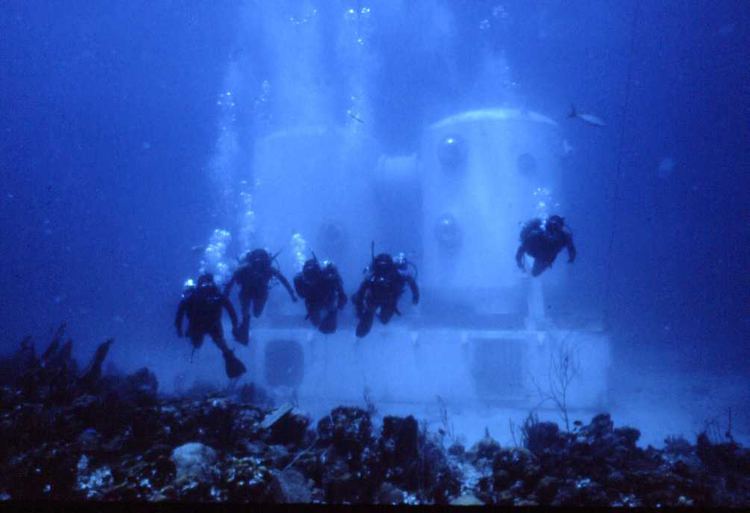
Habitat
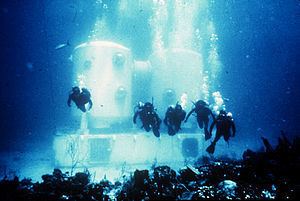
The Tektite habitat was designed and built by General Electric Company Space Division at the Valley Forge Space Technology Center in King of Prussia, Pennsylvania. The Project Engineer who was responsible for the design of the habitat was Brooks Tenney, Jr. Brooks also served as the underwater Habitat Engineer on the International Mission, the last mission on the Tektite II project. The Program Manager for the Tektite projects was Dr. Theodore Marton at General Electric. The habitat appears as a pair of silos: two white metal cylinders 4 m in diameter, 6 m high, joined by a flexible tunnel and seated on a rectangular base in 15 m of water.
Tektite I
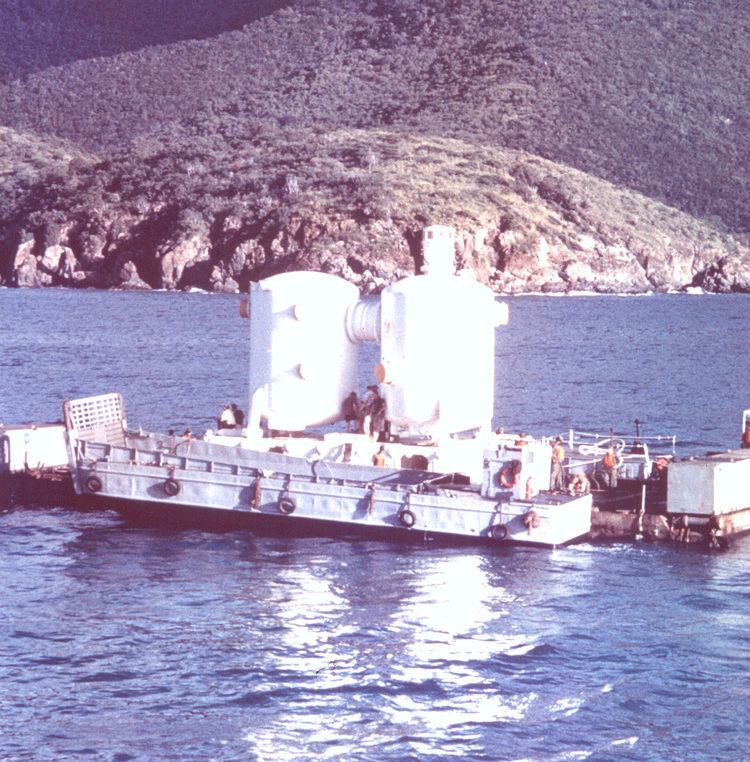
On February 15, 1969, four U. S. Department of Interior scientists (Ed Clifton, Conrad Mahnken, Richard Waller and John VanDerwalker) descended to the ocean floor in Great Lameshur Bay in the U. S. Virgin Islands to begin an ambitious diving project dubbed "Tektite I". By March 18, 1969, the four aquanauts had established a new world's record for saturated diving by a single team. On April 15, 1969, the aquanaut team returned to the surface with over 58 days of marine scientific studies. More than 19 hours of decompression time were needed to accommodate the scientists' return to the surface. The United States Office of Naval Research coordinated Tektite I.
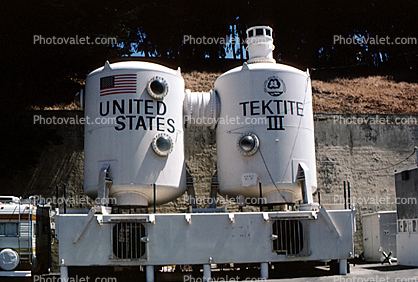
Much of the research for Tektite I centered on humans in this new environment. Topics investigated would include: biology (blood changes, sleep patterns, oxygen toxicity), decompression and decompression sickness, microbiology and mycology.
Tektite II
The United States Department of the Interior coordinated Tektite II, with part of the funding coming from NASA, which was interested in the psychological study of the scientific teams working in closed environments, similar to that of spacecraft.
The missions were carried out in May 1970. Tektite II comprised ten missions lasting 10–20 days with four scientists and an engineer on each mission. Other scientists participating in the all-female mission included Renate True of Tulane, as well as Sylvia Earle and Alina Szmant, graduate students at Scripps Institute of Oceanography. The fifth member of the crew was Margaret Ann Lucas, a Villanova engineering graduate, who served as Habitat Engineer. The Tektite II missions were the first to undertake in-depth ecological studies.
Medical and human research oversight for Tektite II was well documented in a series of reports covering a project overview, saturation diving, lessons learned from Tektite I, application to Tektite II, medical responsibilities and psychological monitoring, medical supervision duties medical and biological objectives project logistics, lessons learned, excursions to deeper depths from storage pressure, decompression tables, general medical observations, psychological observations, blood changes and general program conclusions.
Tektite III
Tektite III (Project Tektite) was a wholly owned and operated California 501 C(3) Non-Profit Corporation. Harold C. Ross was Project Manager. When Tektite II ended General Electric placed the Habitat in storage in Philadelphia. A group of interested parties purchased the Habitat from General Electric for $1.00 with the stipulation it would be removed from the GE storage facility. The Habitat was trucked across the United States to Ft. Mason in San Francisco where it was placed on display. Attempts were made to refurbish the Habitat so it could be used in San Francisco Bay as a teaching tool.
By 1980 the Habitat was fully restored and certified to be used underwater.§ Funds for actually submerging and operating the habitat again were not available.
During the more than 10 years the Habitat was on display at Ft Mason, many school children were taken through the Habitat free of charge by volunteers. Unfortunately lack of funds ended the Project and the Habitat was sold and moved to storage along the Oakland Estuary.
The website Tektite Underwater Habitat Museum reports that at the end of display at Fort Mason, the Habitat was dismantled by welding school students and the metal was recycled.
Ecology
There were nine studies on the ecology of coral reef fishes carried out during the Tektite series:
Physiology
A goal of the Tektite program was to prove that saturation diving techniques in an underwater laboratory, breathing a nitrogen-oxygen atmosphere could be safely and efficiently accomplished at a minimal cost.
Lambertsen's "Predictive Studies Series" that started with Tektite I in 1969 and ended in 1997, researched many aspects of human physiology in extreme environments.
